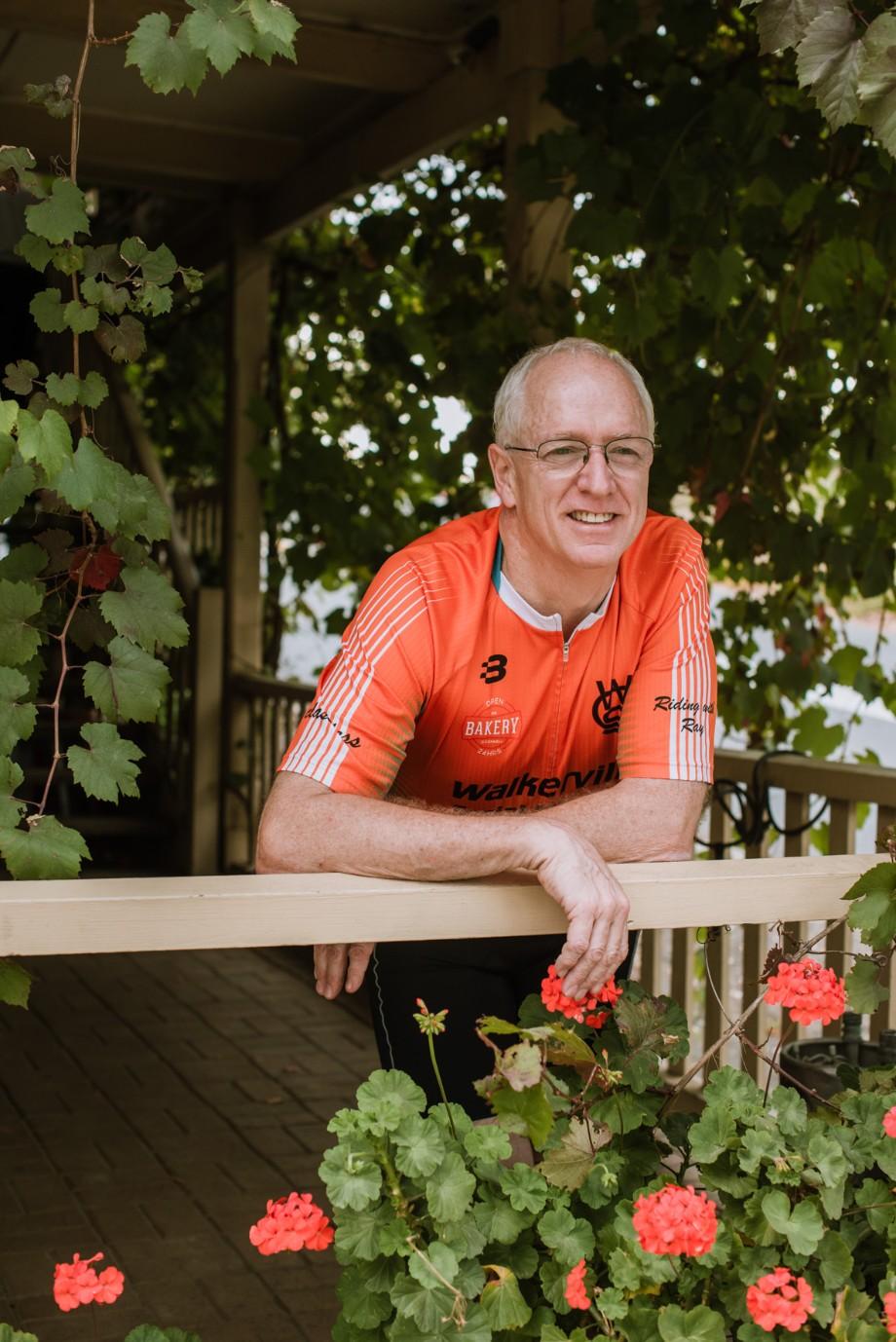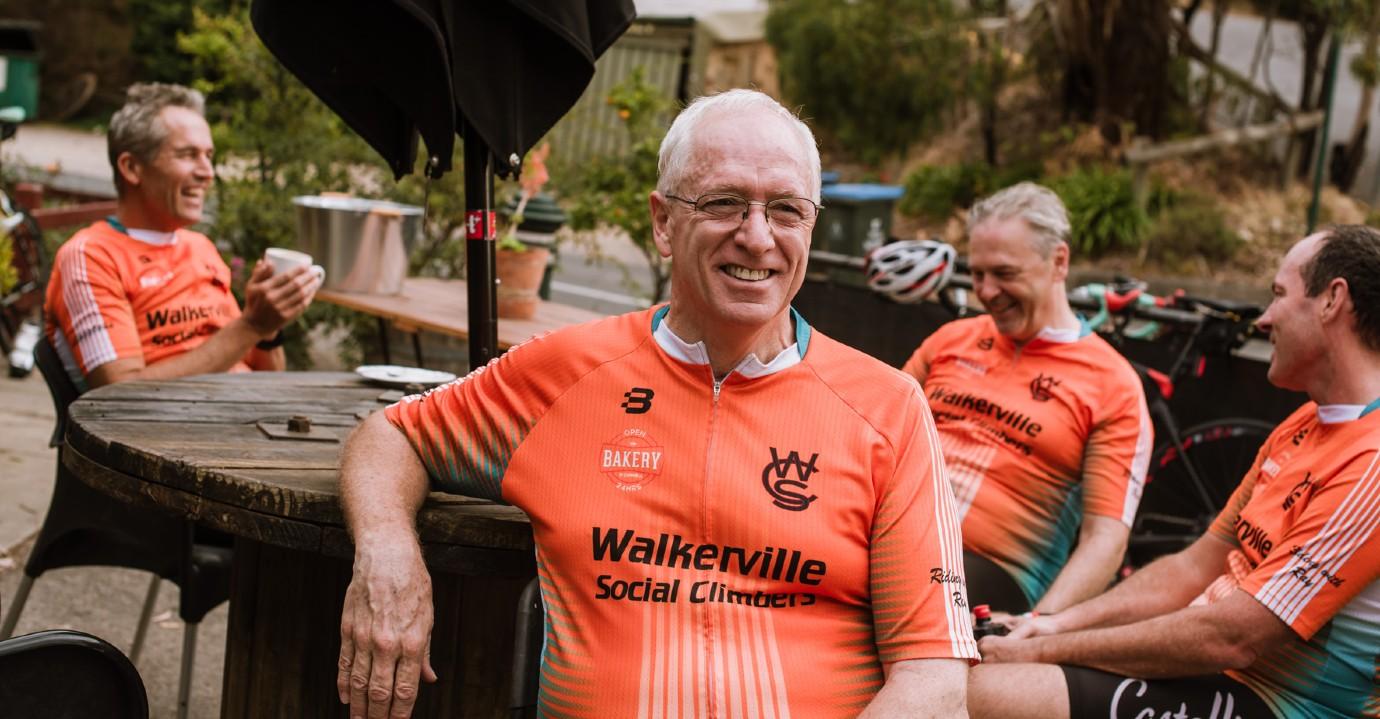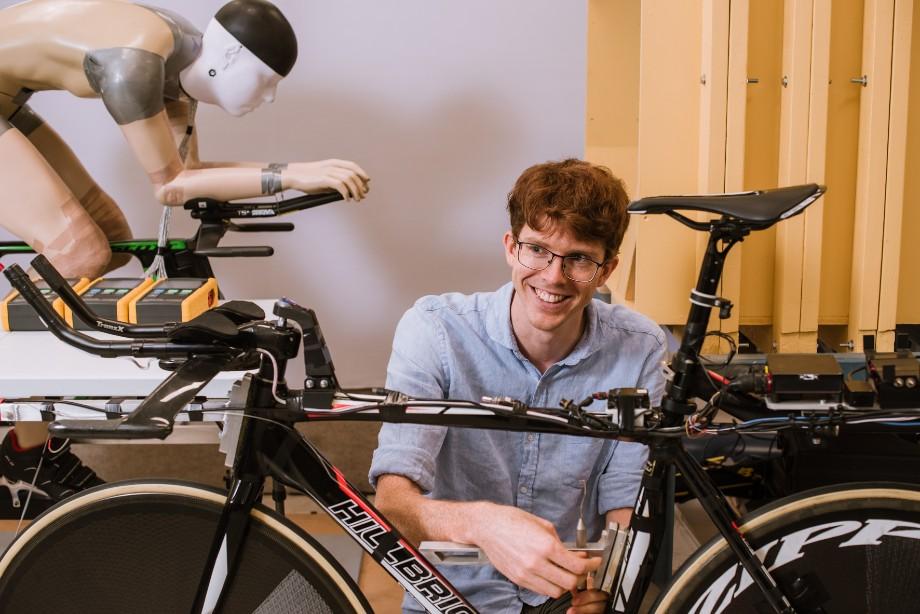Engineering for Olympic success
The researchers and students behind the cycling gear giving Aussie athletes the edge.

From developing the Olympic flame to bike parts and helmets, Associate Professor Richard Kelso has been instrumental in bringing the University of Adelaide to the world stage, in not just one, but five Olympic Games. And our students are coming along for the ride.
When the postponed Tokyo Olympic Games go ahead, and the Australian Cycling Team takes to the tracks, Richard, PhD Candidate Shaun Fitzgerald, and a host of alumni will be watching on with keen interest.
“I think one of the best parts is that we're involving students. It’s one of the biggest payoffs,” Richard said.
Richard and his team played a key role in the final bike developed for Australia's 2020 Olympic cycling team. Working closely with Cycling Australia and bicycle manufacturer Argon 18, the University engineers helped design the 2020 frame, and selected the wheels and shoes, all of which required testing in the University's wind tunnel.
The Aussie cycling team will also be using the crankset and wearing the Kask Mistral helmet Richard and his team helped to develop for the 2016 Rio Olympics.
This is quite an evolution from 2008 when the Sports Engineering Degree at the University was born. As the interim Sports Engineering Program Coordinator at the time, one of Richard’s first projects was to pursue and initiate collaborations between the University and sporting organisations.
“When Cathy lit the cauldron’s ring of fire and stood up, if you watch, the torch flame goes out soon after. So, she was really down to the last few moments. That was very stressful. But in retrospect, the timing was perfect.” Richard Kelso

“The sports where I really wanted to be involved were cycling, rowing and swimming,” he said.
It was Richard’s first phone call to the velodrome (Cycling Australia) which sparked a relationship that has placed the University at the forefront of aerodynamics in sports engineering globally.
“I started working with them [Cycling Australia] testing handlebars and various things. They quite liked what we could do, and we decided to design a helmet together.
“I suddenly realised all my Christmases had come at once.”
It was during the Tour Down Under in 2012 that a new partnership between the University and SCOTT Sports was formed.
“We did some testing comparing their new helmet with a few others, and they were happy with the results,” Richard said.
The relationship blossomed, and in 2014 they gave Richard the enviable opportunity of producing a helmet that would compete with the best on the market.
“They gave me a clean sheet of paper to design another helmet. They said roughly what they wanted and I set about coming up with a new design and trying to beat the best.”
In 2016 the SCOTT Cadence PLUS helmet was launched.
“My favourite victory [for the SCOTT Cadence PLUS helmet] is the Women’s World Road Championship in 2019, where Annemiek van Vleuten won by more than two minutes,” Richard said.
The helmet is also worn by Alistair and Jonathan Brownlee, British triathletes who won gold and silver at the Rio Olympics; and Nino Schurter (Switzerland) and Jenny Rissveds (Sweden), both of whom are world champions and won gold at the Rio 2016 Olympics in cross-country mountain bike riding.
Today, despite his designs contributing to world records, world championships, world cup and Olympic medal wins in cycling, Richard remains humble and is quick to ensure all athletes’ successes are recognised as their victories.
“Ultimately it's up to the athlete. The way I feel is that we want to bring the athletes onto a level playing field,” he said.
But before bikes, helmets and wind tunnels, there was the Sydney Olympic Games, which gave Richard his first taste of seeing his work feature on the world stage.

As part of the University of Adelaide team working on the design and build of the fuel and combustion system of the 2000 Sydney Olympic torch and cauldron, Richard developed something that created history and was watched around the world.
“FCT Flames, the company we worked with, like to say that Olympic flames are the most watched flames in history. It’s true. And that's exciting.”
Watching the Official Opening Ceremony from Adelaide, Richard describes the time as stressful.
“I think maybe fear was possibly the biggest thing. The fear that something would go wrong.”
As Australian athlete Cathy Freeman ascended the stairs, stood in the middle of the cauldron and held the torch up, millions of eyes were on her, but Richard and the University development team, which included 20 students, were literally counting the seconds.
“We realised the torch was right at the limit of its fuel.
“When Cathy lit the cauldron’s ring of fire and stood up, if you watch, the torch flame goes out soon after. So, she was really down to the last few moments. That was very stressful. But in retrospect, the timing was perfect.”
Following the success of the Sydney Olympic Games, Richard and the team also worked with FCT Flames on the 2004 Athens Olympic torch and cauldron and the 2006 Doha Asian games.
It’s been 25 years since Richard joined the University of Adelaide and, with new projects on the horizon with Swimming Australia, there are many exciting days to come.
“I think it's useful to push the boundaries too, and even go over them every now and then, because you learn what you can achieve.”
Success is in the air

Flown home from hospital to the family farm just days after his birth, it’s no surprise PhD candidate Shaun Fitzgerald has always been interested in aerodynamics and aviation.
“On a farm, nobody's an engineer. But everybody is a farmer and they are the world's natural engineers. They design and build everything,” Shaun said.
Working closely with Associate Professor Richard Kelso for the past six years, Shaun contributed to both the 2016 and 2020 Olympic bikes used by Cycling Australia.
Undertaking his honours with alumnus Henry Atkins in 2015, the duo investigated the aerodynamics of the frame, crank set, shoes and seat posts, and developed the socks being worn by the Australian team.
Now in the fourth year of his PhD, Shaun is focused on understanding what the athlete experiences inside the velodrome.
“Because they're indoors, everybody thinks it's still air, nothing's moving.
"But the reality is more complicated with variations due to a cyclist cornering, a large swirling airflow from other riders, and turbulence. “I need to understand all those variables so we can go into the wind tunnel and replicate them all and say, 'that design is optimised for the environment'.”
Story by Dalice Kennedy
Photos by Meaghan Coles
